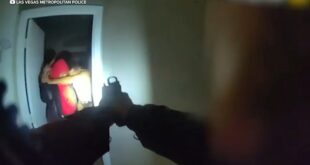Town Hall
November 16, 2013

In observational experiments, researchers constantly battle a phenomenon called the “Hawthorne effect,” where subjects of experiments alter their behavior when aware of being studied. For example, in 2011, researchers at Carnegie Mellon mailed postcards to customers of an electric company, informing customers they were the subjects of a company study on electricity usage. Researchers found that customers who received weekly postcards – simple reminders that their electricity usage was being observed — cut electricity usage by nearly three percent.
The Hawthorn effect is not just limited to psychological studies. Behavior modification is the hallmark of any “society of fear,” in which citizens live under the constant threat of government surveillance. In an environment where individuals reasonably believe their actions are being tracked, recorded and monitored by government agents, citizens are prone to avoiding behavior that will raise red flags. Using such psychological terror, States are better able to control and minimize anti-establishment behavior, and even undesirable thoughts.
Jeremy Bentham discovered this phenomenon more than two centuries ago in his “Panopticon” study. More recently, as a student of Chicago politics, Barack Obama became aware of the power of fear. In fact, many of Saul Alinksy’s “12 Rules for Radicals” — the Bible for budding liberal activists such as Hillary Clinton and Obama in their early days — incorporate the power of fear. Understanding this, it becomes clear why Obama has chosen fear, more so than any other emotion, as his primary catalyst to pass his radical agenda; something that has worked remarkably well for the country’s 44th President.
Following the 2011 “Wikileaks” data breach, Obama implemented a leak-squelching, internal surveillance scheme tabbed the “Insider Threat Program,” designed to turn co-worker against co-worker in pursuing leaks of classified information. According to McClatchy, there is even a course called “Treason 101,” for employees of the Department of Agriculture and the National Oceanic and Atmospheric Administration, which teaches psychological profiling of would-be whistleblowers. “I’m waiting for the time when you turn in a friend and you get a $50 reward,” national security law attorney Kel McClanahan told McClatchy, referring to Obama’s “War on Whistleblowers.”
This “Obama effect” is not limited to tightly-monitored government employees. Fear and intimidation techniques are employed by the Administration against the private sector as well. The Obama Department of Justice, for example, seized the phone records of the Associated Press, digitally stalked Fox News correspondent James Rosen, and is thought to be behind hacking the computer of CBS reporter Sharyl Attkinson – actions precipitated by media stories challenging the Administration. Making this even more sinister, all these steps occurred while the Internal Revenue Service was intentionally targeting anti-Obama activists with tax audits, and applying unprecedented scrutiny in approving the nonprofit status of Tea Party-affiliated organizations.
 Daily Stormer The Most Censored Publication in History
Daily Stormer The Most Censored Publication in History


